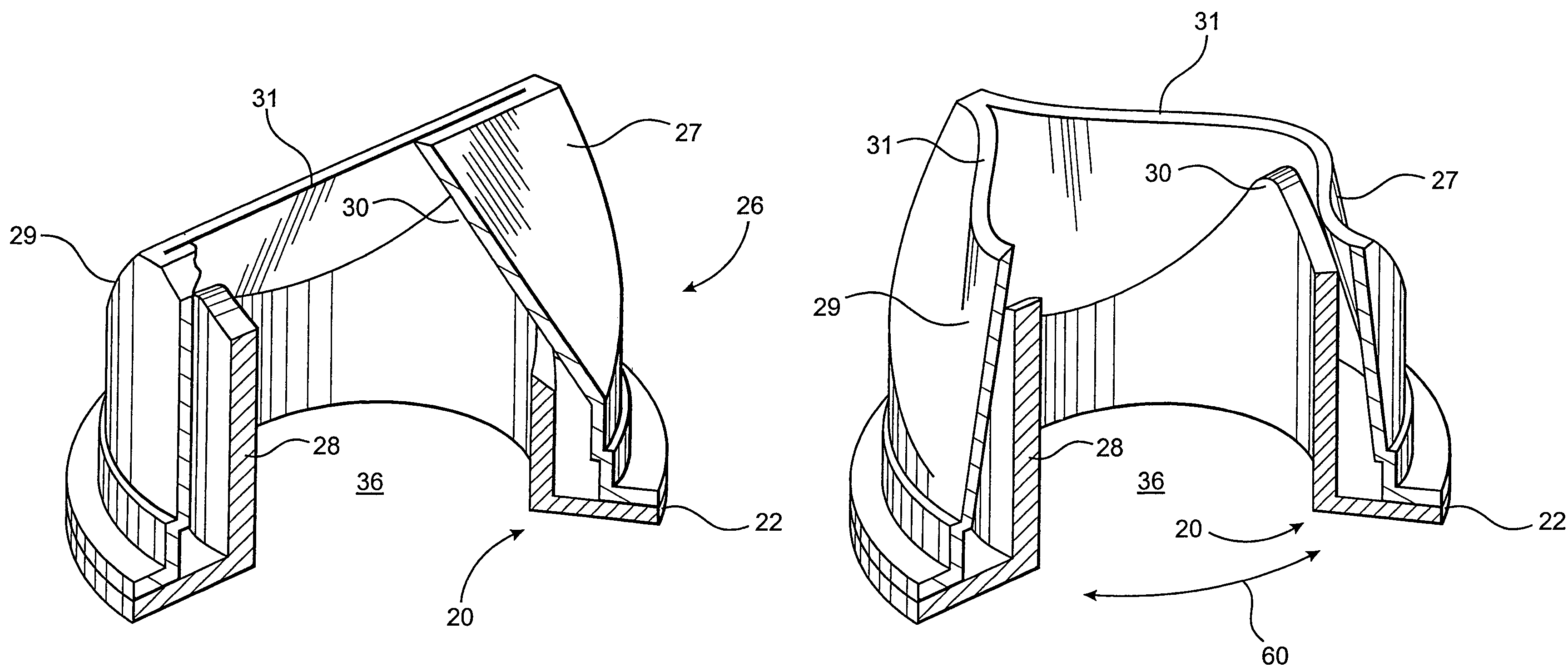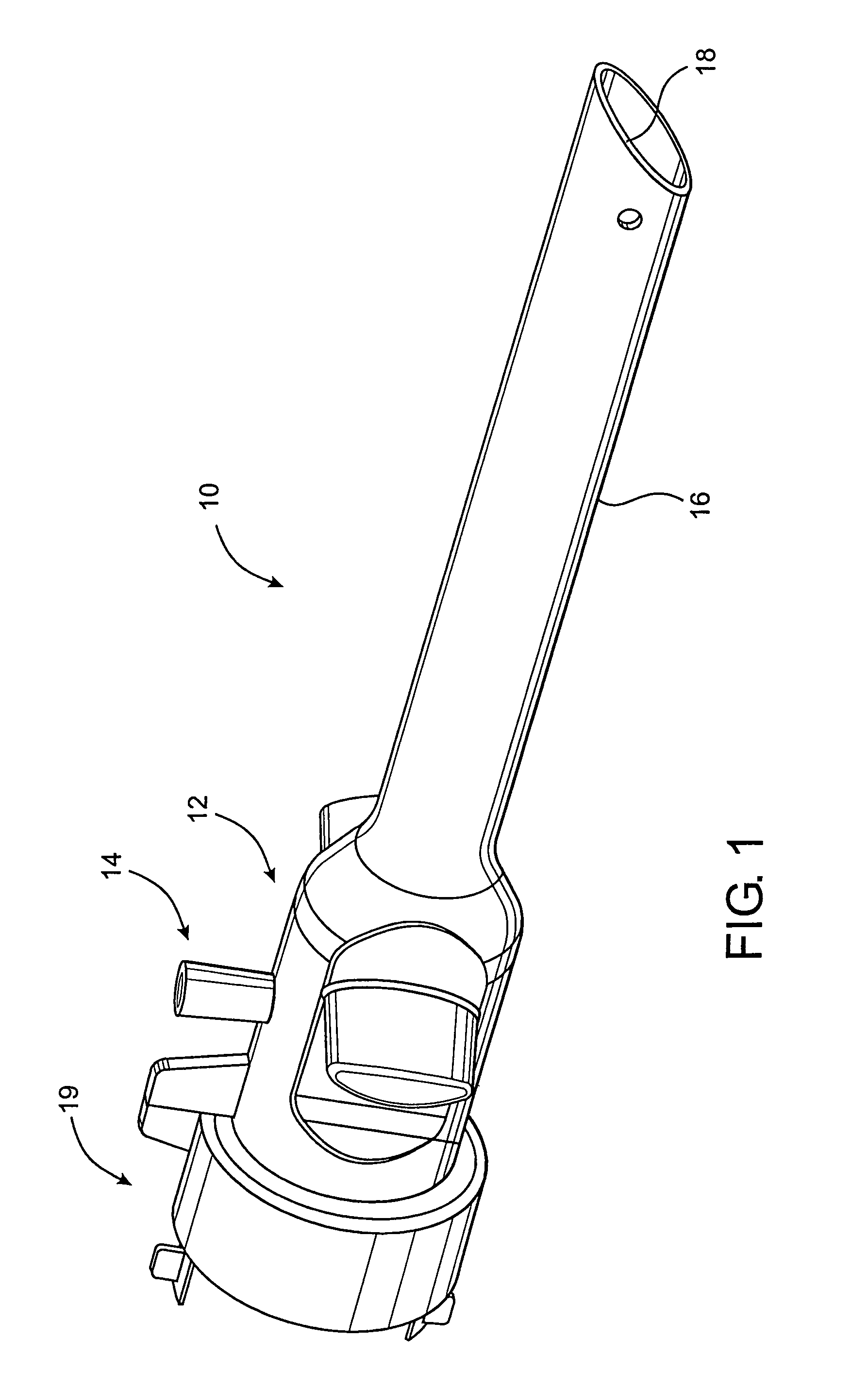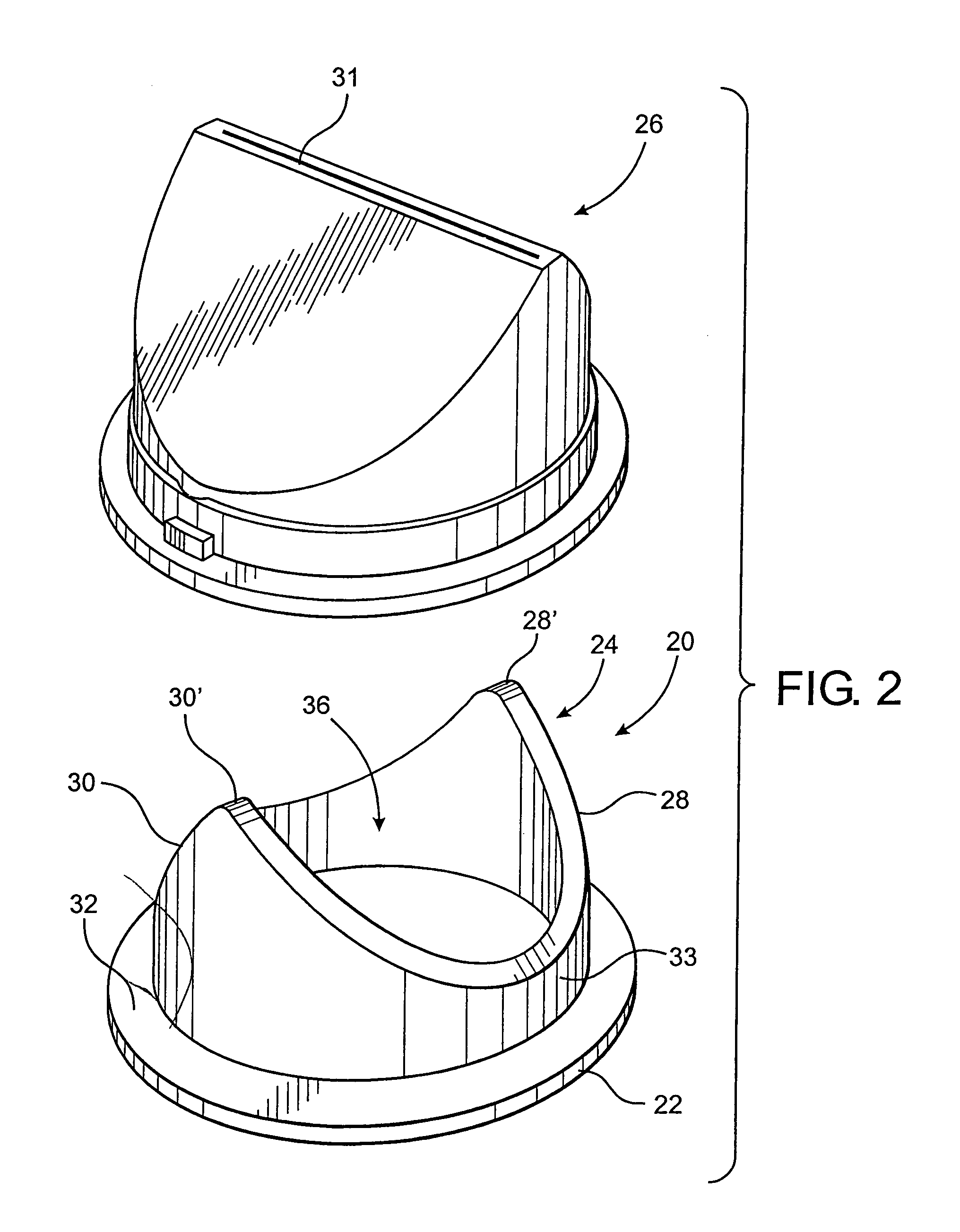Seal positioning assembly
a positioning assembly and seal technology, applied in the direction of valve operating means/releasing devices, functional valve types, transportation and packaging, etc., can solve the problems of time-consuming desufflation of the body cavity by the venting of gas flow through such a small vent opening, and achieve the effect of reducing frictional engagement and rapid desufflation
- Summary
- Abstract
- Description
- Claims
- Application Information
AI Technical Summary
Benefits of technology
Problems solved by technology
Method used
Image
Examples
Embodiment Construction
)
[0059]As shown in the accompanying Figures, the present invention is directed towards a seal positioning assembly which may be considered as part of a seal assembly or which may be used in conjunction therewith, but otherwise considered independent thereof. As described in greater detail hereinafter, the seal positioning assembly may be used with medical instruments of the type used for minimally invasive surgery such as laprascopic and / or endoscopic surgery. Therefore, for purposes of clarity, the seal positioning assembly of the present invention is described for use in the medical field such as by being mounted within a trocar assembly generally indicated as 10 in FIG. 1. Also, as should be apparent, the terms “seal structure” and “valve structure” as well as “seal” and “valve” are used interchangeably herein when referring to the duckbill valve 26 or like structures associated with the various preferred embodiments of the present invention.
[0060]Whether considered a part of a s...
PUM
 Login to View More
Login to View More Abstract
Description
Claims
Application Information
 Login to View More
Login to View More - R&D
- Intellectual Property
- Life Sciences
- Materials
- Tech Scout
- Unparalleled Data Quality
- Higher Quality Content
- 60% Fewer Hallucinations
Browse by: Latest US Patents, China's latest patents, Technical Efficacy Thesaurus, Application Domain, Technology Topic, Popular Technical Reports.
© 2025 PatSnap. All rights reserved.Legal|Privacy policy|Modern Slavery Act Transparency Statement|Sitemap|About US| Contact US: help@patsnap.com



